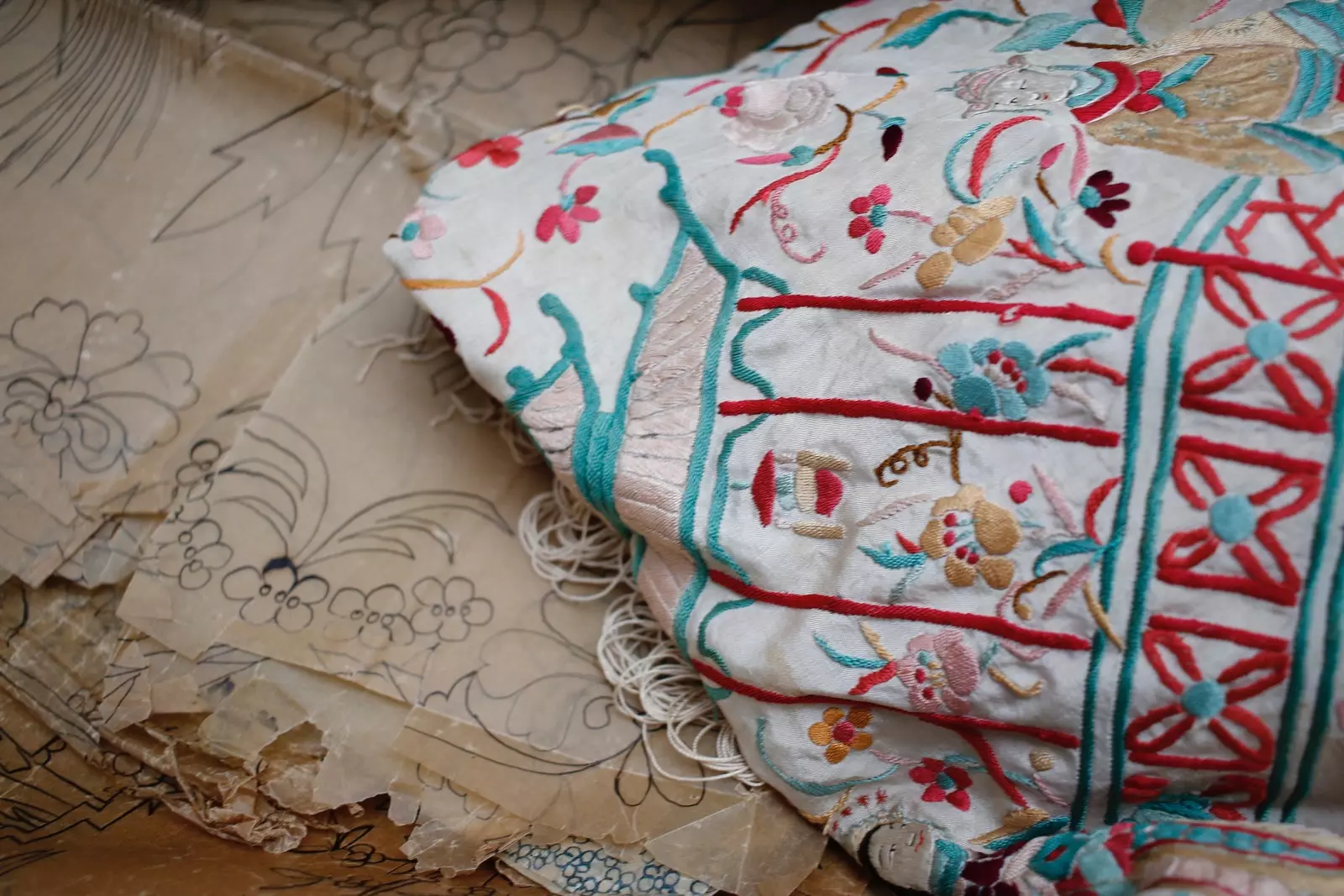
Manila shawls: from Canton to Villamanrique de la Condesa by galleon
"These should be rolled up, they are better preserved, but I have them here on hand to show them," he says. Maria Jose Espinar while he opens the drawer of an old piece of furniture in his workshop Villamanrique of the Countess , in the province of Seville. From inside it, he extracts several templates already yellowed and carefully folded.
Gently he spreads them out on the table and the smell of old, that of glass paper that has probably been locked up in that same drawer for many years, takes over my pituitary, despite the mask.
The drawings made with Chinese ink on those sheets, already frayed in certain parts, they leave me speechless: pagodas, cherry trees in bloom, palatial scenes... and a seal: Canton's . “They are all original templates with which the manila shawls old and over a hundred years old. They have writings in Chinese because they were made in the province of Canton, not in the Philippines as everyone believes , and lead up to your serial number. These were precisely one of the last to arrive in Seville before they began to be made here," says María José.
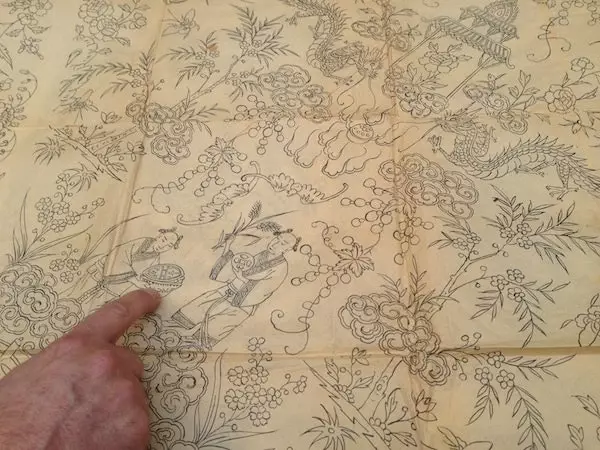
Templates of the shawls that arrived from Canton
Because yes, it turns out the mythical shawls so rooted in our most traditional traditions are not ours, not even Filipino, but Chinese , where they already had the custom of embroidering their kimonos since time immemorial. The nickname "from Manila" was circumstantial: in the 18th century the Philippines was Spanish , and its capital, the port of departure for all the merchandise that came from the East to Seville through the famous Manila Galleon Route . In those ships, in addition to thugs, ebony, noble woods or ceramics were also transported.
Those laboriously embroidered garments with exotic motifs so well penetrated among the Spanish upper bourgeoisie -obviously, not everyone could afford a shawl brought from the Philippines-, that their women did not hesitate to add them to their usual wardrobe.
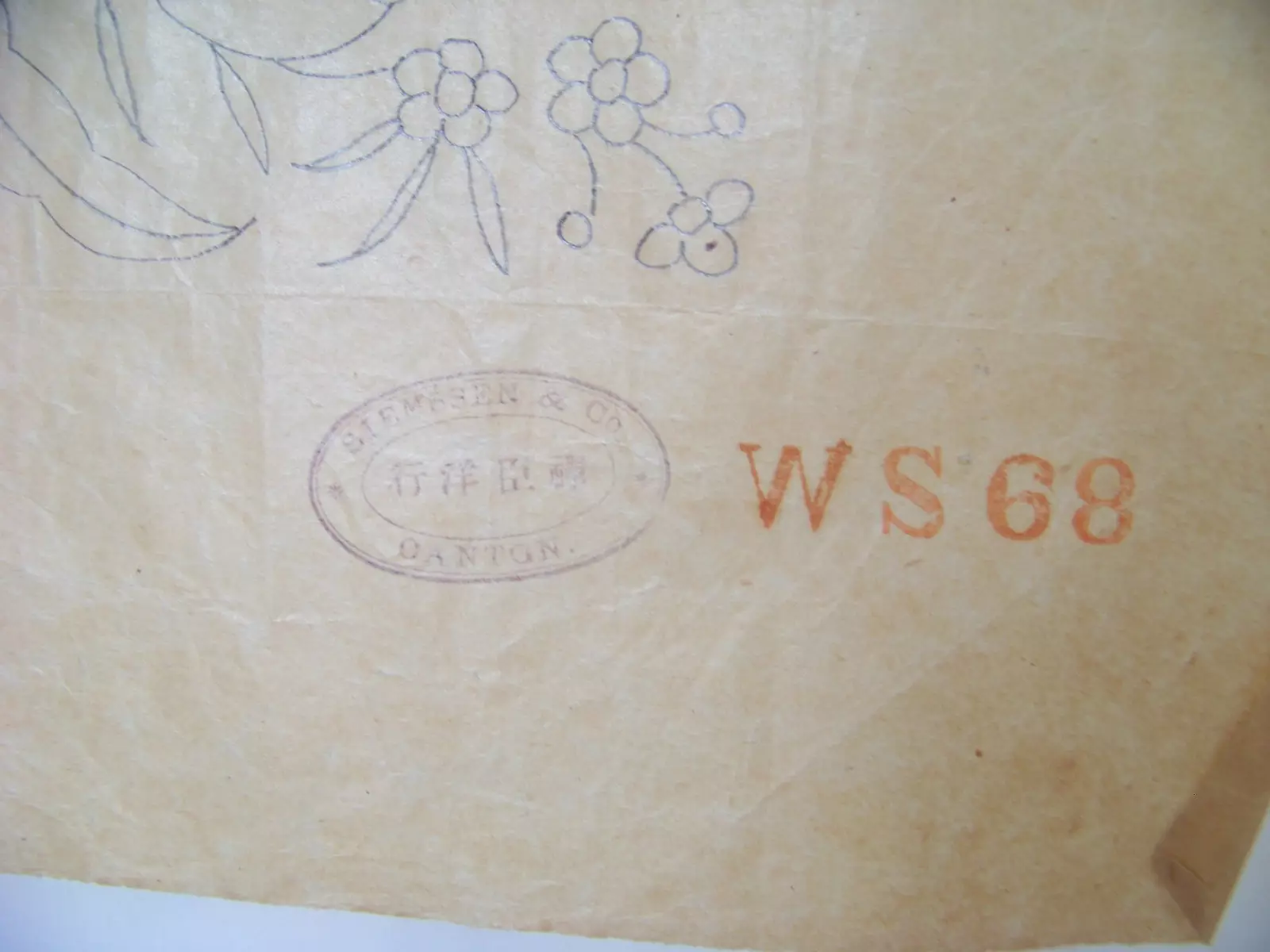
The seal of Canton on the "Manila" shawls
That's why, when Spain lost her colonies and the route to the East ended , the companies that traded with them reacted quickly to find a solution. And what did they do? Very easy: search embroiderers here . “Taking advantage of the situation in which Villamanrique , very close to Seville, trousseaus were traditionally embroidered , labor was used for the shawl. The blank stitch, which is that of the trousseau, is different, but the one that knows how to embroider well, one thing does the same to you as it does another”, says María José while showing me some sets of underwear embroidered in blank stitch by his mother years ago. “ This is how Seville became the nerve center of the shawl ”, she concludes.
It is my guide in these matters third generation of a family dedicated entirely to this beautiful craft. From the walls and mannequins of his workshop hangs a whole multicolored universe in the form of manila shawls in which silks and embroidery, flowers and fringes are the protagonists. She tells me about the different types— Elizabethans , simpler; of cigarette cases , more ornate—and how they have evolved throughout history. History that he has lived closely since he was born.
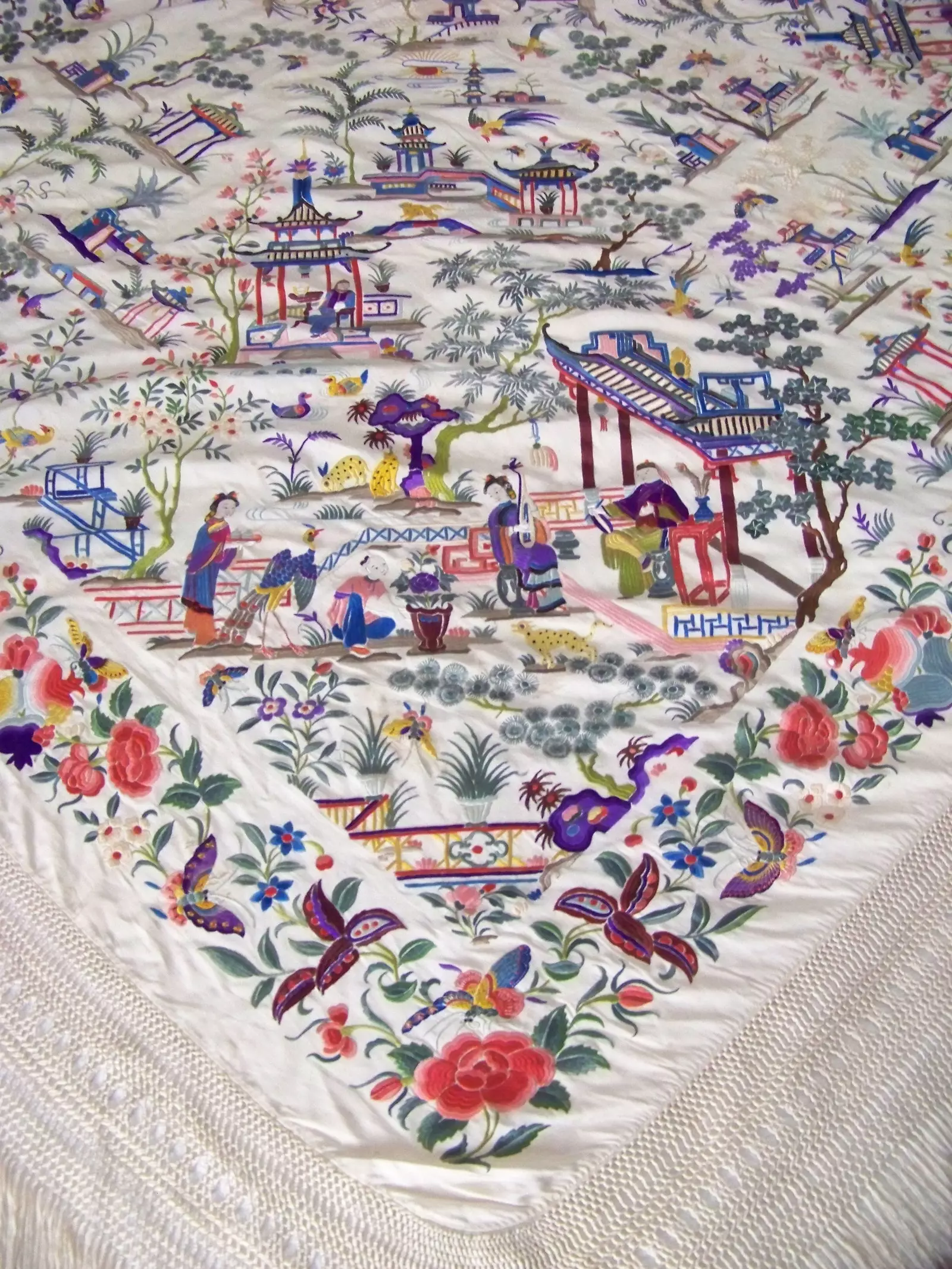
Canton Shawl
“Back in the 1930s, my grandmother had a Manila shawl workshop: she was a pioneer . My mother, when she was 12 years old, started working on it and since I was little, I used to draw with her”. They specialized in design , essential part and beginning of the elaboration process of these unique pieces that are authentic works of art. From their drawings, and from a selection of threads of infinite colors hand-dyed by themselves —that is why no two shawls are the same: because they are handmade and unique—, the embroiderers made —and continue to make— their creations a reality.
But, where does Villamanrique come from this tradition that has become a whole way of life? María José tells me that the nuns already instructed the girls of the town since they were little in this art And how rare was the one who was not given a Christmas present a round frame to start driving. “Our mothers drew us little flowers and panettone, which was the first thing that was embroidered. We went to the house of those who we knew had silks and we asked them for the scraps that they had left over”.
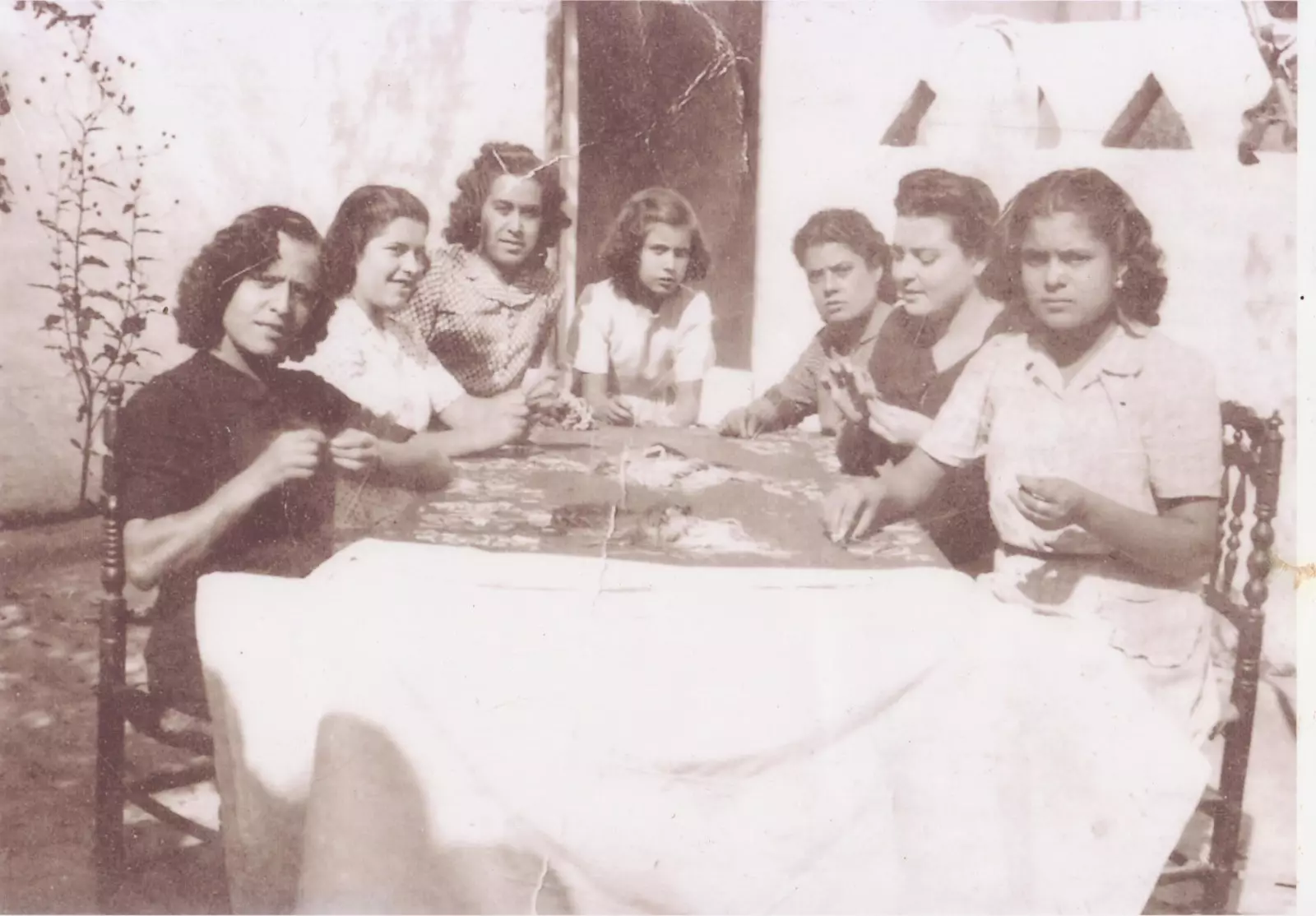
The embroiderers of Villamanrique de la Condesa
María José now leads the business of her mother, Angeles , that although she continues to be the owner, she has already left the job. She talks about her achievements constantly, and it is not for less: she is an emblem in the world of embroidery . “In the 70s and 80s she got to have a hundred embroiderers from all the surrounding towns working for her Y she was the first to climb the shawl on a catwalk . Before, it was a traditional regional garment made of crêpe: she brought natural silks from Italy, added color and turned the Manila shawl into fashion”. So much so, that her shawls crossed borders and reached places like Australia, New York, Mexico or Dubai.
When asked about anecdotes, María José begins and does not stop: “A lady even came to my house once expressly from Puerto Rico to order me some embroidered things for her daughter's wedding,” she says. Among the illustrious characters who keep in their closet a shawl of the Espinar family is Queen Letizia herself, the Nepalese Royal House, Camila Parker and an endless list of Spanish and international artists. Angels went so far with her work that she even got the Gold Medal for Merit in Fine Arts 2007.
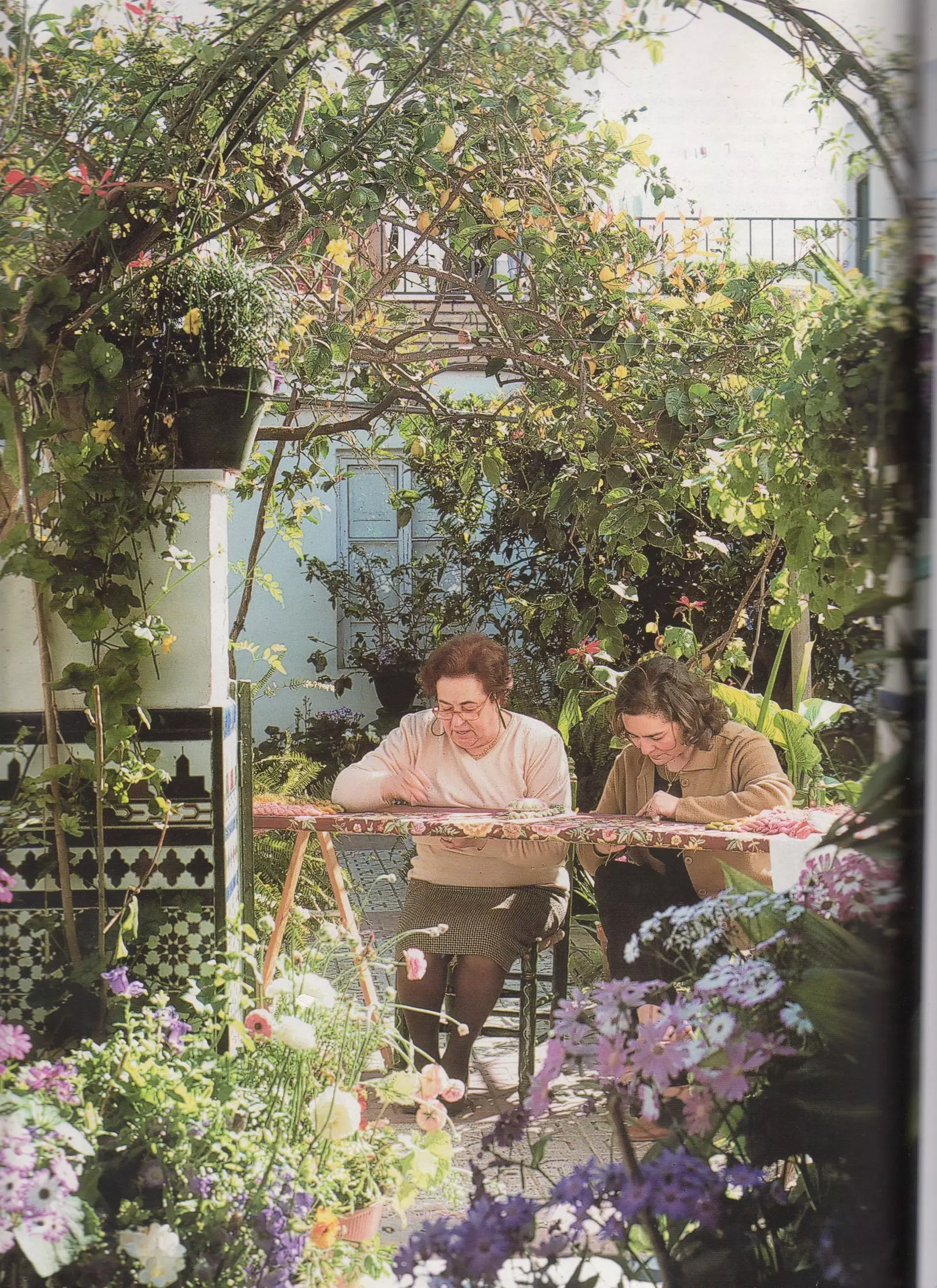
Angeles Espinar embroidering
A merit that is the result of the thousands of hours dedicated to this job by all those women who are still fighting to keep it alive. And the figures are not anything: a shawl can take between 6 and 7 months to make , and the most worked They cost around 4,500 euros, although there are from 700 . Is it really worth the effort? “As long as you really ask what a shawl costs, no one will buy it for you. This would have been extinguished”, affirms María José.
She does not believe the manriqueña that there will be a fourth generation dedicated to the business. Her daughter is still unclear about the future, but she does go down other paths. She, meanwhile, continues betting on tradition and continues to innovate: “ I have created a vintage line of Manila shawls, Espinar Antique . I decided to bet on the old shawls, mid 19th century , so I buy them, restore them, and give them a second life.” A second chance.
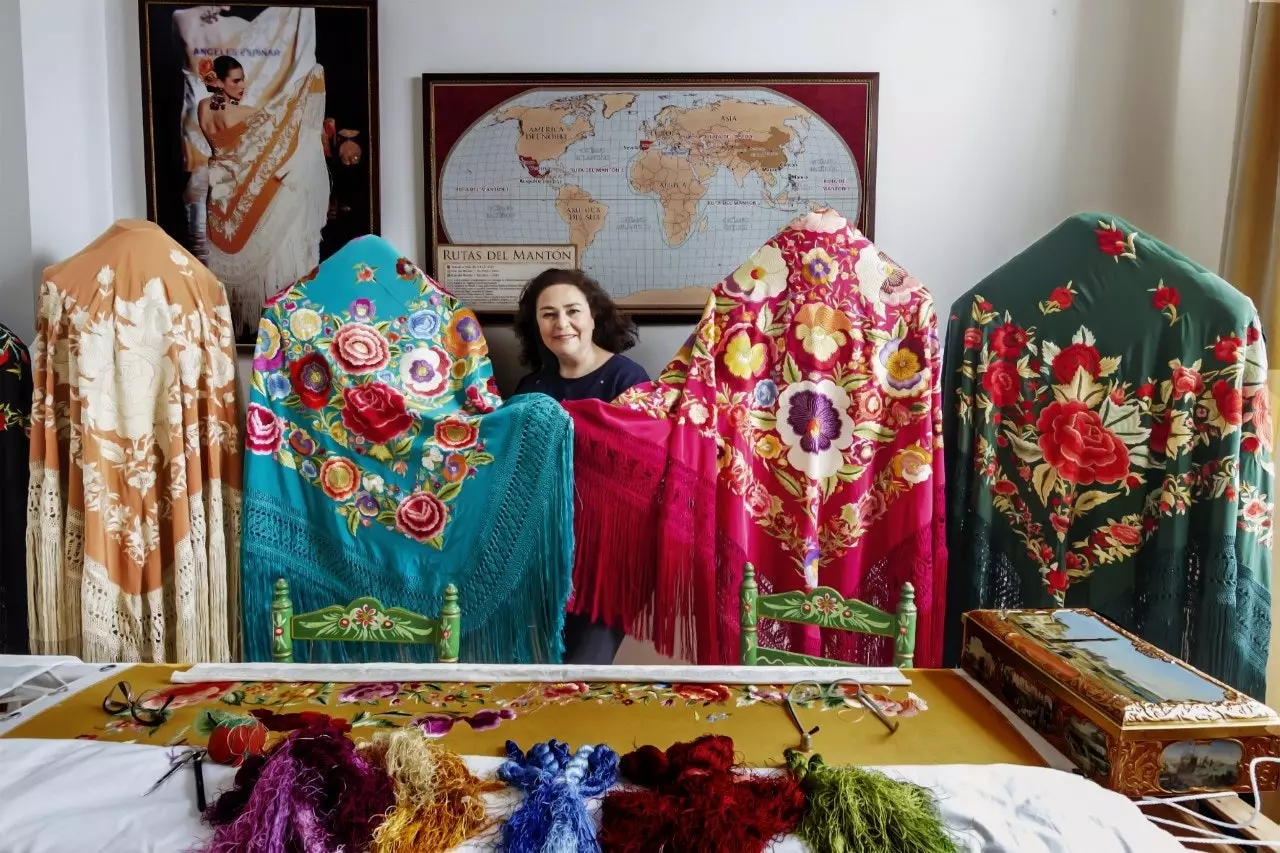
Maria Jose Espinar
I say goodbye to María José while she takes out another of those jewels that she treasures in her workshop. On this occasion, an impressive lacquered box with more than a century of history: it was originally where the shawls brought from Canton were delivered , which being such a delicate garment, had to travel well protected. "I'm collecting them and I have a few, in case the museum comes out in the future," she says.
A museum that, although it is still just a project, they do have in mind from the Villamanrique town hall to make it a reality. A place to pay tribute to all those women who made and continue to make history: a temple to a unique art whose value deserves to be discovered —even more so— to the world.
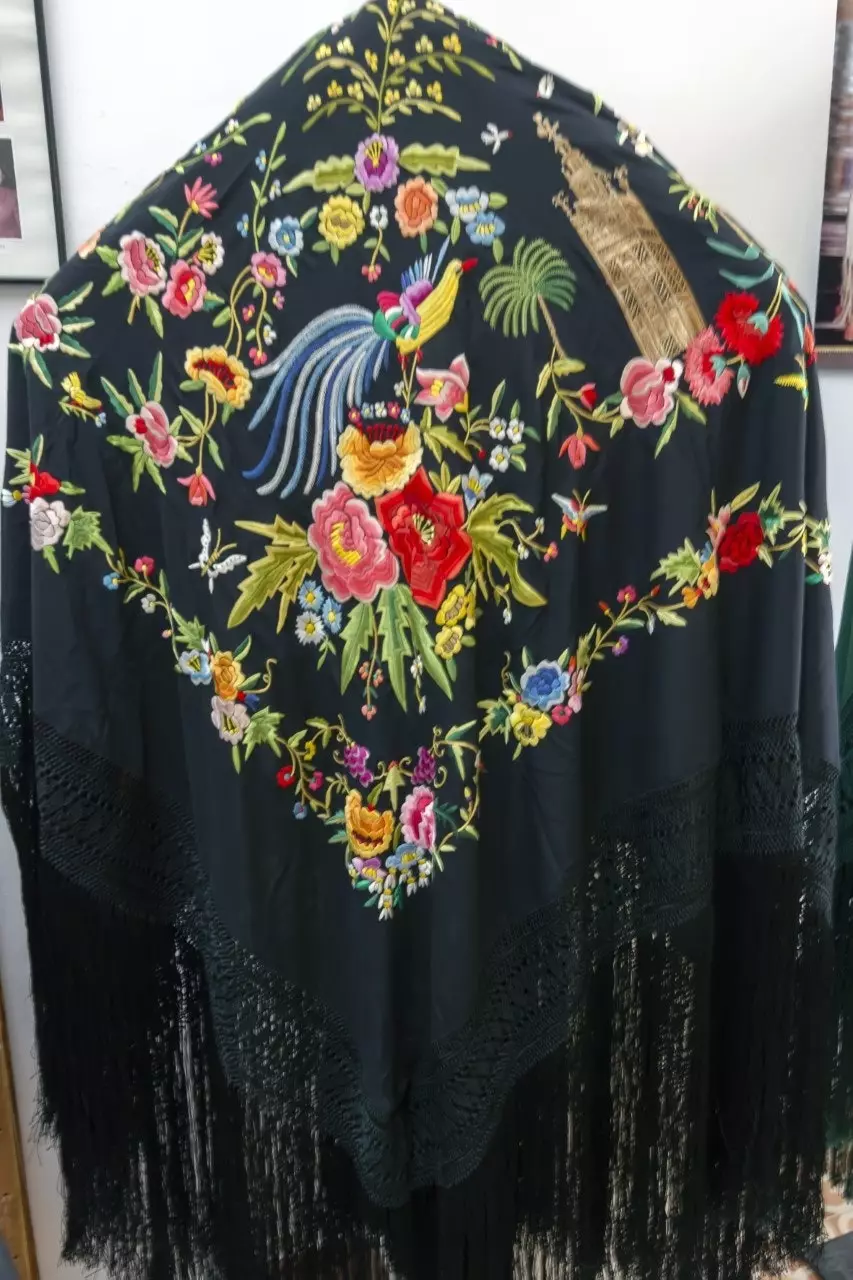
Manila shawls: from Canton to Villamanrique de la Condesa by galleon
